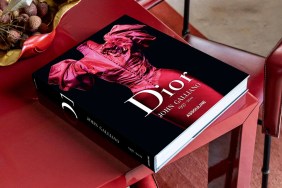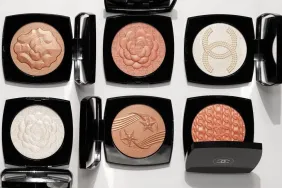

With its impeccable service, famed flower arrangements, and refined menu, La Grenouille is arguably New York’s City most understatedly posh restaurant. I may be a smidgen biased because it’s owned by my best friend’s father, but given that Anna Wintour and Linda Fargo are among the regulars, it’s hard to argue with the fact that it made for the perfect setting for a recent Chanel hosted luncheon. Held in honor of this month’s release of the biography “Chanel, Her Life” by Justine Picardie“, the lunch included a Q+A with the author and New York magazine’s Amy Larocca.
The newly published edition of the book features a series of beautiful illustrations by Karl Lagerfeld, along with an in-depth look at Coco Chanel’s life. Picardie is extremely well-spoken with a wealth of stories and a mesmerizing calm demeanor. Below are some tidbits from the book and some insight into the author’s research.
Inspiration for the book:
The idea of writing a book on Chanel dated back to Picardie’s childhood. She highlighted having vivid memories of her mother’s Chanel No. 5 perfume bottle and told a little anecdote about her mother getting married in the 60s in a little black dress. It wasn’t Chanel (one could only buy Chanel in Paris at the time) but it was made from a Vogue Chanel pattern. The London-born author ended up wearing the dress on numerous occasions throughout what she called her “punk phase” so unlike some who might associate the LBD with prim and properness, she has a more rebellious association with it.
Chanel spent most of her childhood in an orphanage/convent:
Picardie was the only person allowed to stay at the orphanage/convent where Chanel spent most of her childhood and she had to follow the same regimen as the nuns while she was there. Located in a cold mountainous region in central France, while the author was in the abbey, she saw many of the iconic Chanel signatures (think window panes with geometric patterns that look like the interlocked double Cs of Chanel’s logo) and believes they influenced the aesthetic choices the designer made later on.
Chanel hid that she was an illegitimate child and that she was abandoned by her father. When asked, she said that she was raised by aunts who always wore black dresses (clearly in a reflection of the austere nuns she grew up surrounded with). She also would tell people that her father left for America in search of wealth to build a better life for her and her family.
The author tried on some of Chanel’s wardrobe which still smells of Chanel No. 5:
The author was able to meet with Chanel’s last surviving relative, her great-niece Gabrielle, a goddaughter of the Duke of Westminster, and try on Chanel’s own wardrobe. In one of the jackets, Picardie found a handkerchief and white gloves which she said still smelled like Chanel No. 5. (Gabrielle assured her that she was not hallucinating and that in fact many of Chanel’s garments still smelled of perfume…longest lasting tale of perfume I’ve ever heard!)
When going through the Chanel archives Picardie found a classic quilted Chanel bag that once belonged to the designer and it was lined with scarlet red.
Chanel’s lovers:
In her lifetime Chanel had many lovers, but the one link between them all is abandonment. Like with her father, Chanel was loyal to the men in her life, but they were never loyal to her. Picardie believe the only men Chanel truly loved were British playboy Boy Capel and the Duke of Westminster.
The bulk of Chanel’s business as far back as the 1920s came from fragrance and beauty:
Chanel began her fashion career in 1910 as a milliner. Even back to the 1920s the bulk of Chanel’s business came from fragrance and beauty. She was a pioneer in that she was the first to capitalize on the fact that there are countless people who want to buy into the Chanel image, but can’t afford couture and would happily settle for a lipstick.
Ahead of her time:
Chanel closed her fashion house during World War II and was called out for being unpatriotic. When she reopened her house, she got the worst reviews of her life from the French press but was embraced by American publications ensuring an ardent comeback.
The reason for reopening her house in 1954 was that she felt she had to “fight” against the constricting New Look popularized by Dior. She had worked feverishly to liberate women from corsets and did not want to see that go to waste. The easy, fluid shapes were featured in American editions of Vogue, LIFE, and Harper’s Bazaar, among others who championed her new designs.
Unlike her contemporaries, Picardie noted, Chanel believed in clothes, not fashion, and designed for every woman including the working woman, like herself, and for women of all shapes.
And finally…
Though there is a famous Coco Chanel Suite in the Ritz in Paris, it’s actually not the hotel room in which Chanel stayed and later died.
For more on Picardie and her Chanel biography click here and here.







